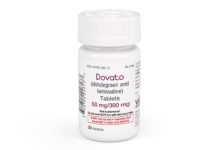The differential effects of commonly prescribed combined antiretroviral therapy (cART) regimens on AIDS-defining neurological conditions (neuroAIDS) remain unknown.
Prospective cohort studies of HIV-positive individuals from Europe and the Americas included in the HIV-CAUSAL Collaboration.
Methods
Individuals who initiated a first-line cART regimen in 2004 or later containing a nucleoside reverse transcriptase inhibitor backbone and either atazanavir, lopinavir, darunavir, or efavirenz were followed from cART initiation until death, lost to follow-up, pregnancy, the cohort-specific administrative end of follow-up, or the event of interest, whichever occurred earliest. We evaluated 4 neuroAIDS conditions: HIV dementia and the opportunistic infections toxoplasmosis, cryptococcal meningitis, and progressive multifocal leukoencephalopathy. For each outcome, we estimated hazard ratios for atazanavir, lopinavir, and darunavir compared with efavirenz via a pooled logistic model. Our models were adjusted for baseline demographic and clinical characteristics.
Results
Twenty six thousand one hundred seventy-two individuals initiated efavirenz, 5858 initiated atazanavir, 8479 initiated lopinavir, and 4799 initiated darunavir. Compared with efavirenz, the adjusted HIV dementia hazard ratios (95% confidence intervals) were 1.72 (1.00 to 2.96) for atazanavir, 2.21 (1.38 to 3.54) for lopinavir, and 1.41 (0.61 to 3.24) for darunavir. The respective hazard ratios (95% confidence intervals) for the combined end point were 1.18 (0.74 to 1.88) for atazanavir, 1.61 (1.14 to 2.27) for lopinavir, and 1.36 (0.74 to 2.48) for darunavir. The results varied in subsets defined by calendar year, nucleoside reverse transcriptase inhibitor backbone, and age.
Conclusion
Our results are consistent with an increased risk of neuroAIDS after initiating lopinavir compared with efavirenz, but temporal changes in prescribing trends and confounding by indication could explain our findings.


 ПОИСК ПО САЙТУ
ПОИСК ПО САЙТУ  поиск по ресурсному центру
поиск по ресурсному центру 



